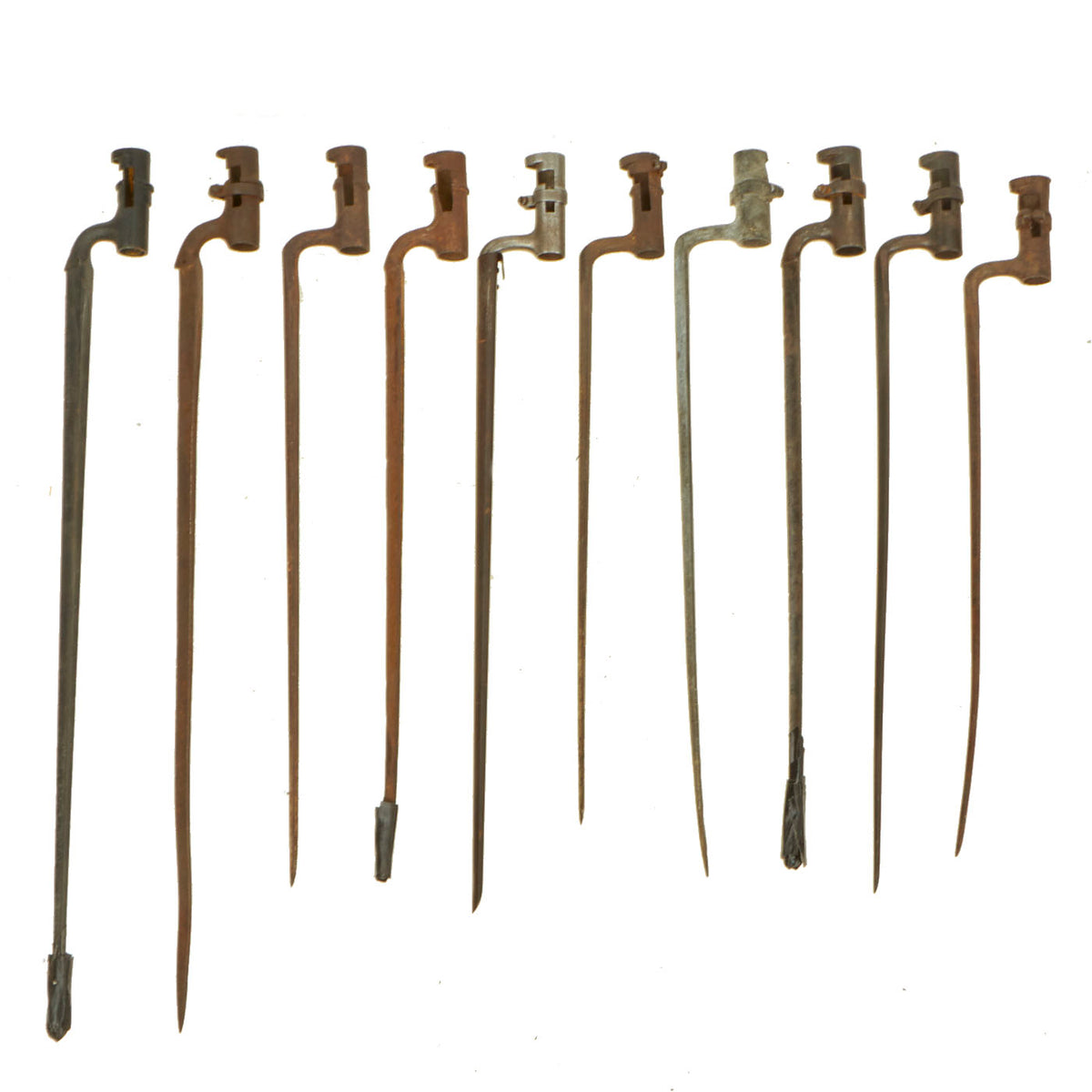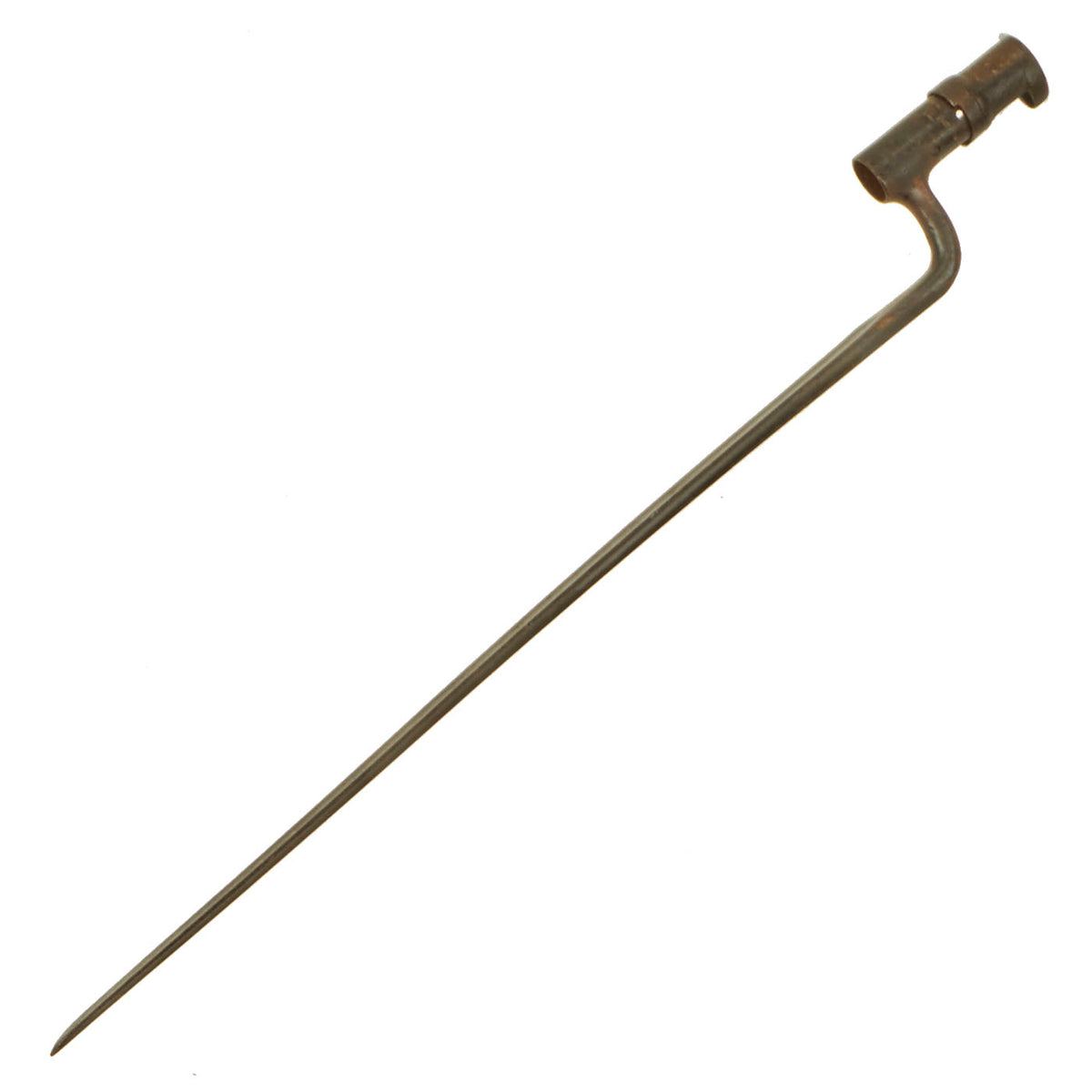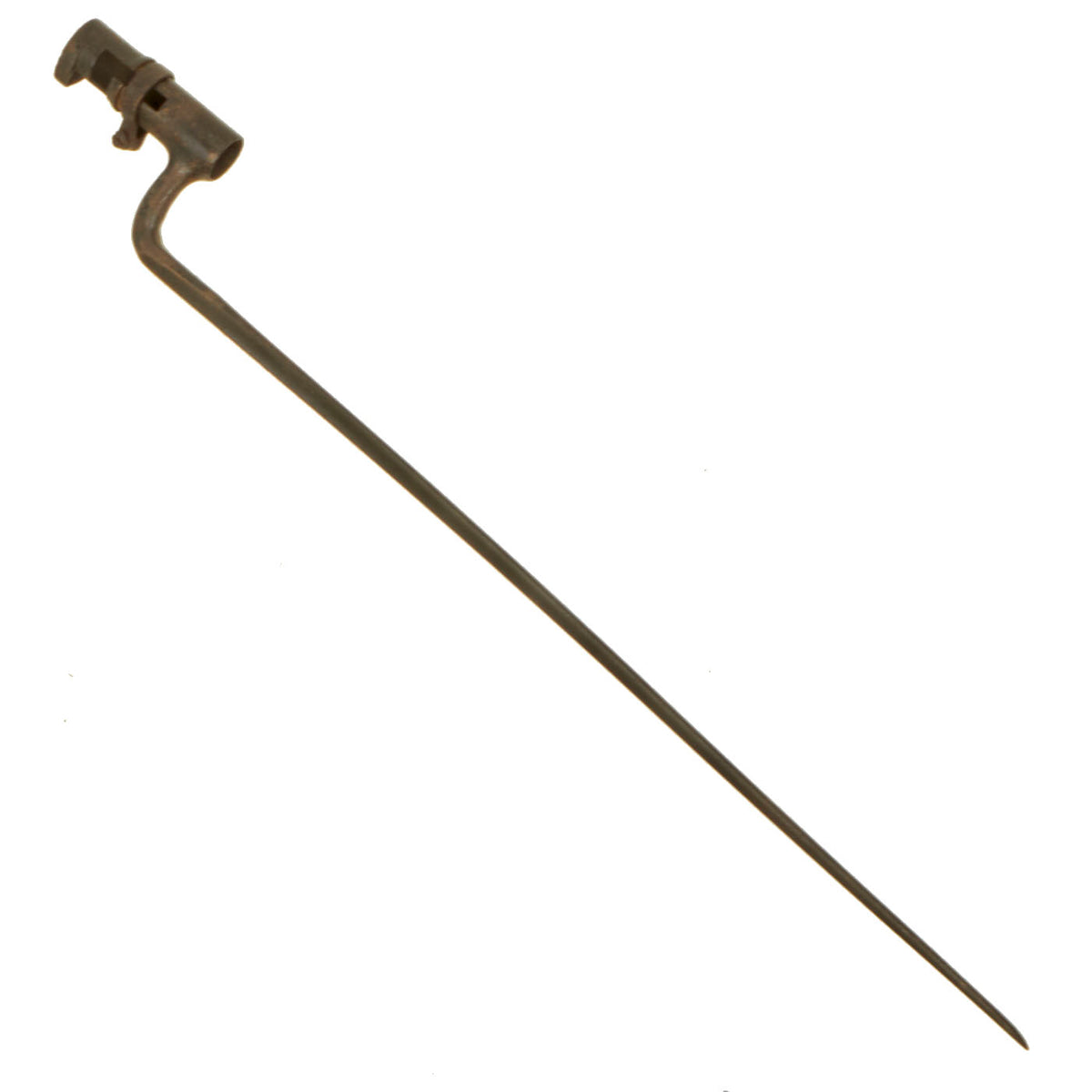Original 18th & 19th Century Socket Bayonet Lot – American, British, Nepalese & Misc – 10 Bayonets – 1 Scabbard Original Items
$ 395,00 $ 118,50
Original Items: Only One Lot of 10 Available. Now this is a fantastic opportunity to add a beautiful variety of bayonets to your collection! All 10 vary in size, condition and country as well as rifle types. A few of the bayonets are even from our 2003 acquisition of the Nepal Royal Arsenal! Some have markings visible and most, unfortunately do not. Only one bayonet has a scabbard.
Some Of The Bayonets Included In This Lot:
4 U.S. Stamped Springfield Bayonets & 1 Scabbard
-1873 Springfield Trapdoor Bayonet With Scabbard: Stamped “U.S.” above an “S” for Springfield. Offered in excellent condition. The model 1873 “Trapdoor” Springfield was the first standard-issue breech-loading rifle adopted by the United States Army.
Socket Length: 3 Inches – Socket Inner Diameter: 18.88mm – Blade Length: 18 ½” – Scabbard Length: 18 ½”
-1873 Springfield Trapdoor Bayonet: Stamped “U.S.” above an “S” for Springfield. Offered in relic condition with cracks in the socket, diameter will measure larger. The blade has a slight curve to it.
Socket Length: 3 Inches – Socket Inner Diameter: 20.73mm – Blade Length: 16 ½”
-1873 Springfield Trapdoor Bayonet: Stamped “U.S.” above an “S” for Springfield. Offered in good condition.
Socket Length: 3 Inches – Socket Inner Diameter: 18.88mm – Blade Length: 18 ½”
-1873 Springfield Trapdoor Bayonet With Scabbard: Stamped “U.S.” above an “S” for Springfield. Offered in good condition. There is quite a bit of rust and the US stamp is barely visible. The socket is also slightly expanded.
Socket Length: 3 Inches – Socket Inner Diameter: 20.10mm – Blade Length: 18 ½”
-2 British Made Bayonets
-Martini-Enfield Rifle P-1895 Socket Bayonet: The only stamping still visible on the ricasso is the “WD” which would normally be above the Broad Arrow, Crown over E followed by a number and a date. Unfortunately we do not know the exact year this was manufactured but we do believe it to be produced in the late 1880s. This is not a converted bayonet.
Socket Length: 3” – Socket Inner Diameter: 18.04mm – Blade Length: 21 ½”
All bayonets vary in manufacturer, rifle type, condition and size. Almost all are complete with a locking ring, but a few are missing them. A few bayonets may even date back to the colonial era. All are beautiful and unique in their own way and they all come ready to display!
The socket fitting enabled a soldier to fix his bayonet but still fire his weapon.
Among single-shot musket-bearing troops of 17th century Europe, cold steel remained more effective than lead in close-quarters clashes. As early as 1611 put-upon musketeers were jamming pocket daggers into the muzzles of their guns. This makeshift weapon of last resort evolved into the plug bayonet, its name likely derived from the cutlery center of Bayonne, France. The first known mention of its military application appears in the memoirs of Chevalier Jacques de Chastenet, seigneur de Puységur, who describes the French use of crude, foot-long plug bayonets during the Thirty Years’ War (1618–48). Not until 1671, however, did General Jean Martinet standardize plug bayonets for his fusilier regiment. English dragoons adopted the weapon a year later.
By then the plug bayonet had proved a mixed blessing, as it was difficult to remove from the muzzle should an infantryman need to reload his musket and resume firing. At the July 1689 Battle of Killicrankie, Scottish Maj. Gen. Hugh Mackay lost half of his 4,000-man infantry to a Highlander charge when his troops failed to fix their plug bayonets in time. An early solution was the ring bayonet, offset from the barrel to allow firing with the bayonet fixed in place. Mackay re-equipped his surviving infantrymen with this variation.
In 1703 the French army chose the socket bayonet for its infantry. Secured to a lug/sight atop the muzzle by a zigzag slot, a butterfly screw or a spring-loaded catch, socket bayonets predominated on battlefields through the 1840s. Over the next half century, sword or knife bayonets eclipsed the socket type, as soldiers could wield such bayonets independent of their other weapons.
Fast Shipping with Professional Packaging
Thanks to our longstanding association with UPS FedEx DHL, and other major international carriers, we are able to provide a range of shipping options. Our warehouse staff is expertly trained and will wrap your products according to our exact and precise specifications. Prior to shipping, your goods will be thoroughly examined and securely secured. We ship to thousands clients each day across multiple countries. This shows how we're dedicated to be the largest retailer on the internet. Warehouses and distribution centres can be located throughout Europe as well as the USA.
Note: Orders with more than one item will be assigned a processing date depending on the item.
Before shipping before shipping, we'll conduct a thorough inspection of the items you have ordered. Today, the majority of orders will be delivered within 48 hours. The delivery time will be between 3-7 days.
Returns
The stock is dynamic and we cannot completely manage it because multiple stakeholders are involved, including our factory and warehouse. So the actual stock may alter at any time. It's possible that you may not receive your order once the order has been made.
Our policy is valid for a period of 30 days. If you don't receive the product within 30 days, we are not able to issue a refund or an exchange.
You can only return an item if it is unused and in the same state as the day you received it. You must have the item in its original packaging.
Related products
Uncategorized
Uncategorized
Uncategorized
Uncategorized
Uncategorized
Angolan Rebel 1970s era 60mm Inert Display Mortar from Angolan Civil War Original Items
Uncategorized
Uncategorized
Armoured Fighting Vehicles of the World: AFVs of World War One (Hardcover Book) New Made Items
Uncategorized
Uncategorized
Uncategorized
Australian WWII Owen MK1 Machine Carbine SMG Custom Fabricated Replica with Sling Original Items
Uncategorized
Armored Burgonet Helmet & Polearm from Scottish Castle Leith Hall Circa 1700 Original Items
Uncategorized
Band of Brothers ORIGINAL GERMAN WWII Le. F.H. 18 10.5cm ARTILLERY PIECE Original Items
Uncategorized
Uncategorized
Uncategorized
Uncategorized
Uncategorized
Uncategorized












































































